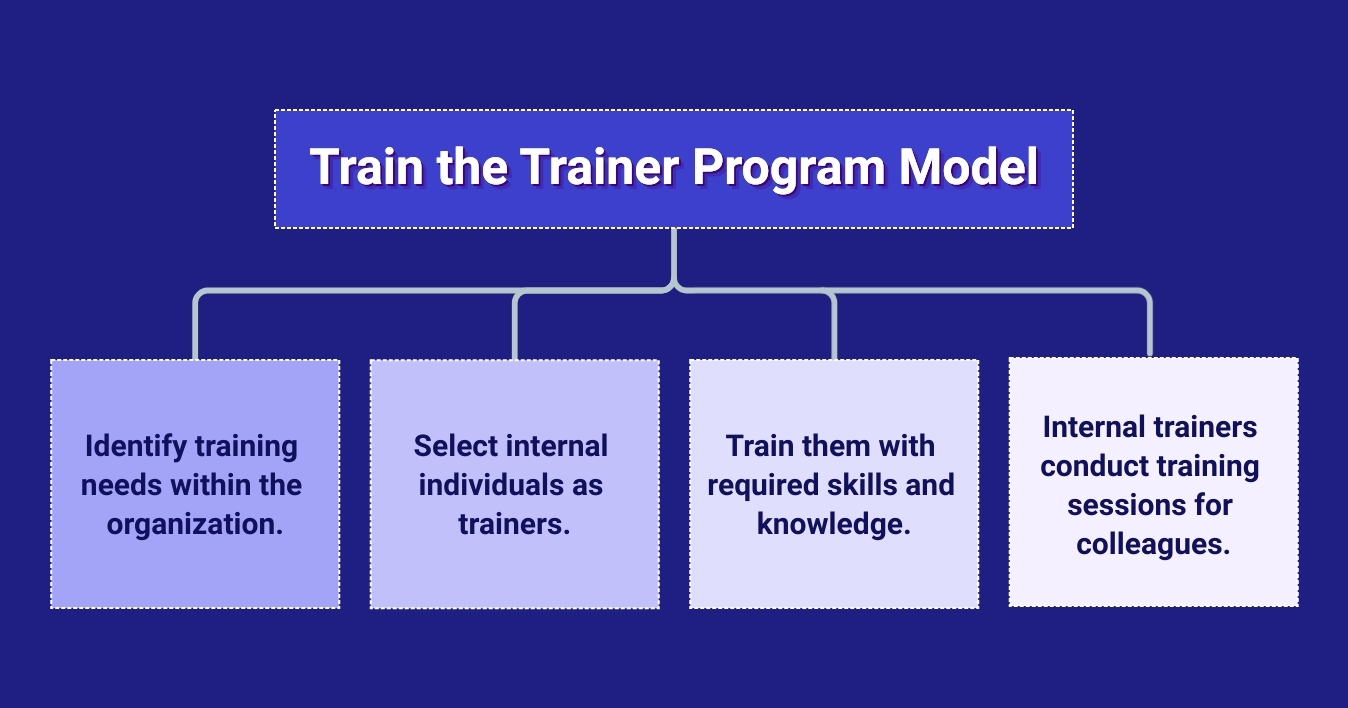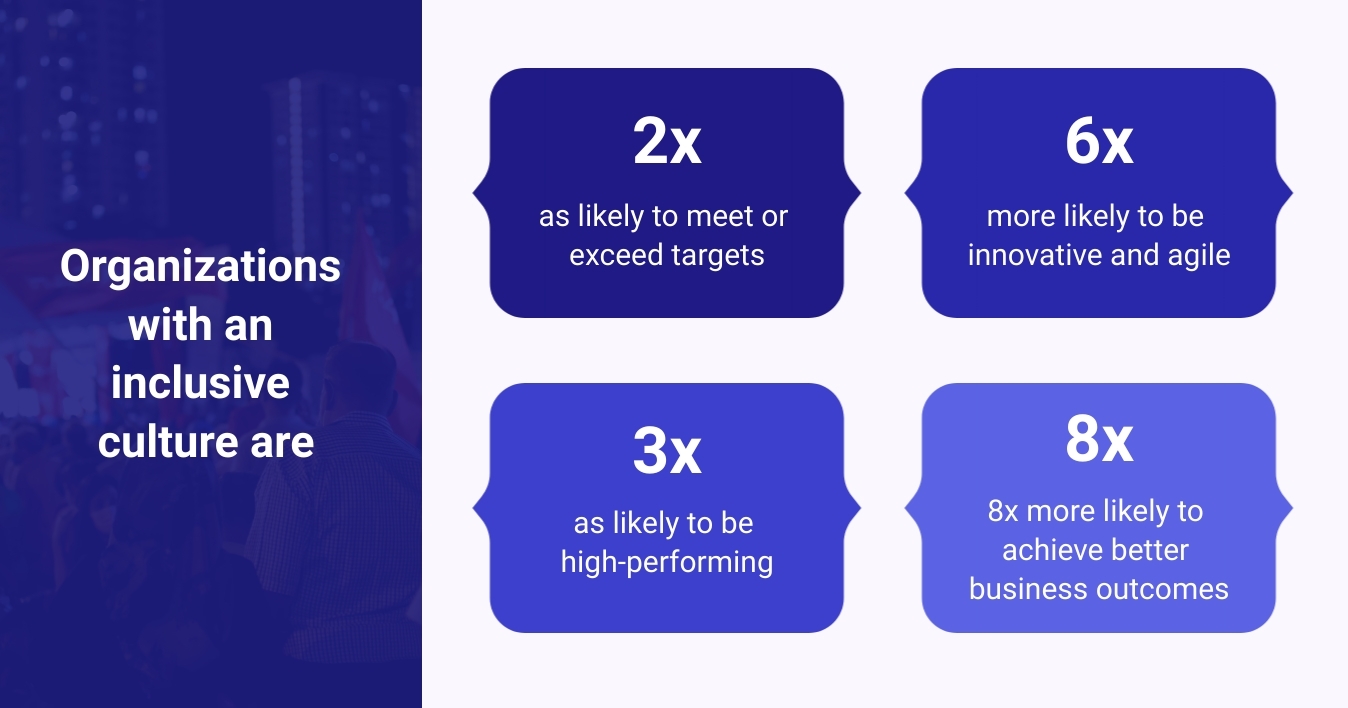What is a Train the Trainer Program? Complete Guide to Transforming Experts into Educators
In the dynamic world of human resource development, "Train the Trainer" programs are transformative initiatives designed to amplify training impact by empowering select individuals to educate others within their organization or community.
A Train the Trainer program equips internal experts with the skills and knowledge to become effective trainers, creating a sustainable and cascading effect on knowledge transfer.
For instance, the Taking Texas Tobacco Free (TTTF) programÖffnet in einem neuen Tab trained "champions" to deliver tobacco cessation education at local mental health authorities (LMHAs), resulting in a remarkable 28.71% increase in knowledge post-training compared to baseline.
At its core, this model transforms subject matter experts into adept educators, leveraging inherent organizational expertise while cultivating a culture of continuous learning and empowerment.
The success of these programs hinges on a well-structured implementation process, which includes comprehensive content knowledge acquisition and robust instructional techniques.
Emphasis is placed on hands-on practice, feedback mechanisms, and ongoing support systems to ensure that trainers are fully prepared to deliver impactful training sessions.
By embracing the Train the Trainer model, organizations can achieve consistent training quality, scalable instruction, and a learning-centric environment.
Key Takeaways
- Train the trainer programs focus on empowering experts to teach others, promoting sustainable knowledge transfer.
- Ensuring success necessitates a structured approach including content mastery and instructional skills development.
- Adopting this model can enhance training quality and support a culture of continuous learning across organizations.
Core components of Train the Trainer programs

To truly harness the potential of "Train the Trainer" programs, it is crucial to understand and implement their core components effectively.
This involves a structured approach that ensures comprehensive employee development and training, turning them into master trainers capable of delivering high-quality training aligned with organizational goals.
1. Identify training needs
The first step is to perform a thorough needs assessment to determine the required skills and knowledge. This process should involve input from subject matter experts to ensure the relevancy and specificity of the training content.
2. Design and development of training modules
Once needs are identified, develop training modules tailored to meet these needs—ideally as SCORM filesÖffnet in einem neuen Tab, which ensure seamless integration with any SCORM‑compliant LMS for consistent delivery and accurate learner tracking.
3. Delivery of training
Training delivery should engage participants through interactive facilitation skills. Effective presentation and facilitation, along with robust communication skills, are essential for your Train the Trainer program to succeed. This ensures the training is informative and retains the attention of adult learners.
4. Evaluation of training effectiveness
Finally, evaluate the success of your training with a robust assessment process. This includes obtaining feedback and using it to refine the training.
An effective evaluation helps in understanding whether the training has achieved the desired impact and if effective training practices were employed.
Benefits of implementing a Train the Trainer program
Engaging in a Train the Trainer model allows your organization to harness a range of benefits, including customized learning experiences and significant savings on costs and resources.
This approach ensures learning consistency and bolsters your team's capabilities through empowerment and skill development.
Tailored learning experience
A tailored learning experience reflects the unique needs of your organization and accommodates various learning preferences.
By adopting an internal training program, you can customize the curriculum to address specific challenges and objectives. This ensures that the learning is not just relevant but also highly applicable to your organizational context.
Cost-effectiveness and resource optimization
The Train the Trainer strategy is renowned for its cost-effectiveness and resource optimization. By equipping internal trainers, you reduce the need for external consultants and can conduct sessions on a schedule that minimizes operational disruptions.
Ultimately, this model promotes efficiency in training delivery, making it a highly economical choice for long-term talent development.
Enhanced training consistency across the organization
Consistency and standardization in training across the entire organization are key goals. An internal training program ensures that all employees receive the same level of training, aligned with the organization's goals and values.
This standardization helps maintain high training quality and supports uniform personal and professional development.
Empowerment and skill enhancement of internal trainers
Fostering growth opportunities within your team is paramount. Train the Trainer empowers your internal experts by upgrading their skills to take on the role of trainers.
This skill enhancement benefits each individual and contributes to collective employee development. The more skilled your trainers are, the more they can drive talent development within your organization.
Challenges and solutions in implementing Train the Trainer programs
Implementing Train the Trainer programs involves navigating various challenges that can impact the effectiveness and sustainability of training initiatives. Thoughtfully addressing these challenges is crucial to achieving desired outcomes.
1. Skill variability among trainers
Not all trainers possess the same level of teaching proficiency, leading to inconsistent training quality.
Solution: Standardize the selection criteria for potential trainers. When selecting potential trainers, it is crucial to establish clear selection criteria. One of the biggest issues you’ll encounter is skill gaps between trainers.
Look for candidates with robust leadership skills and the ability to understand and manage group dynamics. They should also exhibit a high level of emotional intelligence to connect with and inspire participants.
2. Maintaining engagement
Engaging trainees throughout the training process can be difficult, especially with complex or detailed content.
Solution: Incorporate interactive methods such as real-life case studies, role-playing, and interactive simulations to foster active learning and engagement.
When selecting trainers, assess their training delivery skills based on their capability to convey complex information in an engaging and interactive way that resonates with adult learners.
3. Resource constraints
Even though the Train the Trainer model is inherently designed to be cost-effective, limited budgets, time, and materials can constrain the scope and depth of training programs.
Solution: Optimize resources by leveraging cost-effective digital training tools and platforms and consider blended learning approaches to reduce dependency on physical resources.
4. Measurement of training effectiveness
Assessing the impact of training on performance and translating learning into practical workplace applications can be challenging.
Solution: Implement comprehensive evaluation strategies that include both qualitative and quantitative measures, such as feedback surveys, skill assessments, and performance analytics post-training.
Bauen, senden und handeln Sie mit Leichtigkeit auf Mitarbeiterbefragungen mit Hilfe unseres Leitfadens für Mitarbeiterbefragungen.
5. Cultural differences
In multinational organizations, cultural variations can affect how training is perceived and absorbed.
Solution: Customize training materials to reflect cultural sensitivities and employ culturally adept trainers to facilitate a more inclusive learning environment.

6. Incorporating adult learning principles
Adults learn differently than children, and thus, your Train the Trainer programs must reflect adult learning principles.
Solution: Cater your programs to adult learning principles by focusing on these four things:
- Relevance: Ensure that the content is directly applicable to the learners' work or personal life.
- Experience: Leverage the diverse experiences of adult learners to enrich the training.
- Autonomy: Allow learners to have a say in their learning journey, fostering a more engaging training experience.
- Practicality: Design training to be task-oriented and problem-centered, encouraging immediate application.
7. Technological adaptation
Resistance to new technologies can impede the adoption of innovative training methods.
Solution: Provide foundational training on new technologies as part of the program and offer ongoing tech support to ease the transition. Provide foundational training on new technologies and also supply training content as SCORM files—making it easier for trainers to upload structured, interactive modules into Learning Management Systems with built‑in tracking and resume functionality.
8. Scalability issues
Expanding training programs to accommodate more participants without compromising quality presents a significant challenge.
Solution: Develop a mentorship system where experienced trainers mentor new ones, ensuring knowledge transfer and maintaining quality across the board.
9. Updating training materials
Keeping training content up-to-date with current practices and technologies requires constant vigilance and effort.
Solution: Continuous improvement and feedback mechanisms. Creating a learning culture that prioritizes continuous improvement is non-negotiable for a successful training course or program.
Implement feedback mechanisms to gather insights from both the trainers and trainees after each session. Use surveys, one-on-one interviews, and group discussions to collect feedback.
Analyze this data to refine approaches, update training materials, and enhance the overall effectiveness of your program.
10. Trainer burnout
Intense demands on trainers, especially in robust programs, can lead to burnout and high turnover.
Solution: Promote work-life balance through adequate scheduling, provide access to professional development and mental health resources, and rotate training duties among a larger pool of qualified individuals.

11. Post-training support
Trainers often face challenges after the training that require ongoing support to ensure the successful implementation of their skills.
Solution: Create an ongoing support network that includes regular check-ins, refresher sessions, and a community forum for trainers to exchange ideas and solutions.
12. Customization vs standardization in training content
Customization provides flexibility but can lead to a lack of standardization.
Solution: Maintain a core structure to ensure quality while adapting to meet individual learner needs. Implement quality assurance mechanisms to assess whether content retains its integrity across different settings.
By proactively addressing these challenges with strategic solutions, organizations can enhance the effectiveness of their Train the Trainer programs and ensure they deliver lasting benefits.
This proactive approach not only optimizes training outcomes but also supports the continuous professional development of trainers and trainees alike.
Case studies and real-world applications
In the realm of "train the trainer" models, case studies serve as an indispensable tool for illustrating the transition from theory to practice. Here are three case studies showcasing the success of Train the Trainer programs across various industries.
Case study #1: Training-the-Trainers model proves effective in an HIV counseling and testing program
The effectiveness and sustainability of a training-of-trainers (TOT) model for voluntary counseling and testing (VCT) in the Caribbean were evaluated through comprehensive data analysis on VCT providers and trainers.
The program successfully trained 3,489 providers in clinical skills and 167 individuals in training techniques. As a result, 65% of providers actively offered VCT services, and 80% of trainers went on to conduct at least one course.
According to a 2009 study published in Human Resources for Health titled "A successful international public–private partnership to improve HIV training and care in the Caribbean: the Johns Hopkins HIV counseling and testing training program," this TOT approach “rapidly scaled up VCT services and training capacity, proving both effective and sustainable.” The success of this model underscores its potential for large-scale implementation in similar healthcare settings.
Case study #2: Enhanced Train-the-Trainer model for delivering education on pediatric palliative care
A 2018 study in the pediatric care sector evaluated the impact of enhanced implementation of the Education in Palliative and End-of-Life Care for Pediatrics (EPEC®-Pediatrics) curriculum on knowledge dissemination, health professionals' knowledge, practice change, and the quality of pediatric palliative care (PPC).
Titled "National Impact of the EPEC®-Pediatrics Enhanced Train-the-Trainer Model for Pediatric Palliative Care," the study trained regional teams of 3–6 health professionals across 15 pediatric oncology programs in Canada, who then became EPEC-Pediatrics Trainers. These trainers went on to educate 3,475 learners and implement quality improvement projects.
An overwhelming 96.7% of learners reported improved PPC knowledge, and 10 out of 15 sites met their practice change goals. While improvements in care quality were only observed in two areas, the study concluded that “our approach was highly effective in achieving knowledge dissemination, knowledge improvement, and practice change goals.”
This highlights the strong potential of targeted, scalable training models to enhance PPC integration within pediatric oncology programs.
Case study #3: Successful insect identification from educational volunteers
In Oregon and Washington, 71 volunteers were trained in insect identification through intensive "train-the-trainer" workshops.
According to the study "Insect Identification Educational Volunteers in Oregon and Washington: A Train-the-Trainer Model" by Corp and Rondon, the program—led by university Extension faculty, agricultural professionals, and Master Gardeners—had a significant community impact. Within a year, 96% of trainees were able to identify insects, and 86% were actively providing education.
Volunteers contributed over 700 hours of educational service. The program’s success highlights the effectiveness of selecting highly motivated participants and providing them with comprehensive training and ongoing support.
FAQs
How can organizations measure the ROI of Train the Trainer programs?
To assess the ROI of Train the Trainer programs, you should track quantifiable performance metrics pre-and post-training. This might include:
- Improvements in employee productivity: Measure performance against benchmarks set before the train-the-trainer sessions.
- Reduced training costs over time: Compare the costs of an external train the trainer course with running in-house sessions after implementing the model.
What are the latest trends in Train the Trainer technology and methodologies?
Recent advances in technology are reshaping Train the Trainer methodologies. These include:
- Virtual and augmented reality: Immersive technologies for realistic virtual training environments.
- Microlearning platforms: Bite-sized, focused training content for quicker learning.
By incorporating these technologies into your Train the Trainer process, you keep your corporate training programs both current and effective.
How does Train the Trainer adapt to different cultural contexts within global companies?
In global companies, cultural adaptation is crucial for a successful employee training program. Here's how:
- Customized material: Training materials should be tailored to respect and reflect cultural differences.
- Diverse trainer selection: Trainers from various cultural backgrounds can offer unique insights and foster inclusivity.
By recognizing the nuances in cultural contexts, your Train the Trainer workshops can enhance their global reach and effectiveness.
Conclusion
By implementing a Train the Trainer program, you can profoundly enhance your organization's learning and development.
By empowering internal experts to become proficient trainers, you can ensure consistent, high-quality training tailored to your organization’s specific needs.
This approach not only optimizes resources and reduces costs but also fosters a culture of continuous learning and skill development.
Addressing challenges such as skill variability, engagement, and scalability with strategic solutions ensures your program's success. Ultimately, Train the Trainer programs are a sustainable model for achieving long-term training effectiveness and organizational growth.
About the author
Ryan Stoltz
Ryan is a search marketing manager and content strategist at Workhuman where he writes on the next evolution of the workplace. Outside of the workplace, he's a diehard 49ers fan, comedy junkie, and has trouble avoiding sweets on a nightly basis.